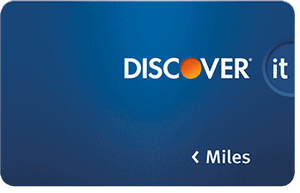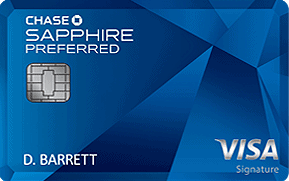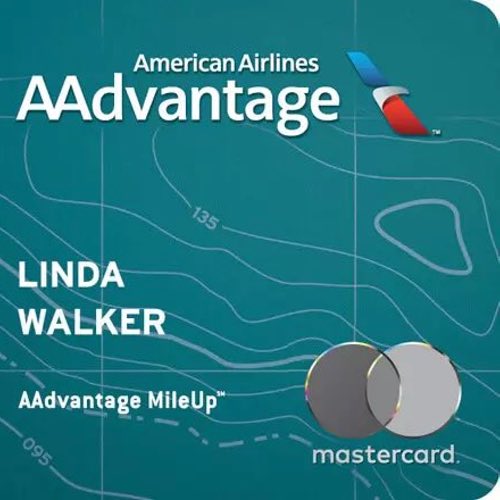
If you are a frequent jet-setter (and responsible card user) a travel rewards card can save you a substantial sum of money on your travels. Travel rewards cards often give points per dollar on flights, hotels, and other travel-related expenses. However, with a huge variation of travel rewards cards on the market, it can be difficult to choose the right one. Annual fees in the travel rewards card category can vary massively also, with some having no annual fees and others having annual fees of $500+. This guide aims to help you understand the main things you should be looking for choosing a travel rewards card. We also suggest three great travel rewards cards at three different annual fee price points: no annual fee, mid-tier, and premium-tier.
What should I know when choosing a travel rewards card?
When choosing a travel rewards card these are the most important factors to consider and compare:
- Point value – Travel rewards cards earn points, also sometimes known as miles on more airline-oriented cards. The majority of travel rewards cards let you redeem points in many different ways. The value of your points can vary depending on how you redeem them. Before settling on a travel rewards card, you should research the ways different cards let you redeem your points and work out what card can bring you the best value.
- Annual fee – The majority of travel rewards cards, especially in the premium tier, come with annual fees. Premium travel cards can have annual fees of over $500. In most cases, travel rewards cards with annual fees will come with better rewards and benefits. However, before deciding on a card you should consider such rewards and benefits suites in regards to the annual fee. Ensure that you will get more value in rewards and benefits than you’ll pay in yearly fees.
- Foreign transaction fees – The majority of travel rewards cards do not have foreign transaction fees, but some do. These are fees that you would pay on a purchase made in a different currency on top of the purchase price. If you plan to use your travel rewards card for foreign travel, make sure your chosen card has no such fees. This is not important if you plan on staying in the US.
- Benefits suites – Travel cards come with travel-centric benefits, for example, automatic trip cancellation insurance, rental car benefits, or room upgrades. Some premium tier travel cards have ludicrous benefits suites that even overshadow the card’s rewards, such as concierge services and access to luxury travel lounges. When deciding on a travel card, make sure to weigh the card’s benefits suite against the annual fee.
- Sign-up bonuses – Many travel cards award bonus points/miles if you spend a certain amount within several months. Some sign-up bonuses can be significant, equating to a free flight or a hotel stay.
- Restrictions and blackout dates – Some travel card rewards programs have restrictions on when and how you can use rewards, for example, you may not be able to use your points on peak travel days.
- EMV Technology – EMV is the technical name for the electronic chip in a credit card (EMV stands for Europay, MasterCard, and Visa, the companies that created it). There are 2 main types of EMV technology found in cards: Chip-and-Signature and Chip-and-PIN. Chip-and-Signature means you have to sign the receipt which also means there needs to be a person there to see your signature. This won’t work at the majority of automated kiosks in Europe for instance. The majority of US credit cards only support Chip-and-Signature, while some places in Europe only accept Chip-and-PIN. If you are choosing a card for foreign travel outside of the US, it would be wise to get a card with Chip-and-PIN.

The Best Easy, No Annual Fee Travel Card – Discover it Miles
The Discover it Miles is a straightforward, no annual fee travel card that offers 1.5 miles (1.5% cash-back equivalent) for every purchase made. In your first year, Discover doubles your rewards, effectively giving you 3 miles (3% cash-back) per dollar. For a card with no annual fee, this is a great deal. To summarise the rewards:
- 1.5 miles (points) for every dollar spent on purchases
- Your first year of miles will be doubled, therefore giving you 3 miles per dollar
Points Redemption Methods
You will always get a value of 1 cent per mile regardless of how you redeem. There are 3 ways to redeem your points.
- An electronic deposit into your bank account
- By a statement credit for eligible travel purchases within the past 180 days
- By using the Pay With Miles Program at selected merchants, e.g. Amazon
Benefits
In comparison to higher tier travel cards with annual fees, the benefits of the Discover it Miles are neither flashy nor opulent. A cardholder will receive benefits such as:
- $30 annual credit for on flight wifi
- Flight accident insurance for you and your family up to $500,000 (when airline tickets are purchased with the Discover it Miles)
- Auto Rental Collision Coverage (when you rent a car on this card)
- Free access to your FICO Score 8 and alerts if it changes.
- Cash at checkouts with no additional costs (no cash-back is received on this cash)
- Price protection when using the card
- Buy Travel Insurance
- Get a Car Rental
- Book Your Accommodation HERE
- Search for Great Tours HERE

The Best Mid-range Annual Fee Travel Card – Chase Sapphire Preferred
The Chase Sapphire Preferred is my primary card. Earn 50,000 if you and are approved for the card.
The Chase Sapphire Preferred is an ideal mid-level annual fee card. It offers 2 points for every dollar spent on both travel and dining and 1 point on all other purchases. If you are someone who spends around $4000 on dining and travel per year this could be a great card choice. The rewards are as follows:
- 2 points per dollar on travel and dining purchases
- 1 point per dollar on every other purchase
- Sign-up bonus: 50,000 bonus points for spending $4000 in the first 3 months
- An additional bonus: 5000 bonus points for adding an authorized user and making a purchase in 3 months
Note: There are several ways to redeem your points with the Sapphire Preferred, as listed below. Depending on how you redeem your points, they can be worth different values.
Points Redemption Methods
- Ultimate Rewards Travel Portal: Chase will give you a 25% point bonus when you redeem your points for travel bookings, equating to a value of 1.25 cents per point.
- Transfer to travel partners: You can transfer your points at a ratio of 1:1 to selected travel partners. However, take note that the value of the points at particular travel partners may vary.
- Statement credit: Redeeming points as a statement of credit will give you a value of 1 cent per point.
- Gift cards: Gift cards will give you varying values for your points, generally 1 cent per point or less.
- Pay with Points with Chase Pay: You can use points to pay at selected merchants, e.g. Amazon, but you’ll only get 0.8 cents per point.
Benefits
The benefit suite of the Sapphire Preferred may pale in comparison to its more extravagant sibling the Sapphire Reserve, but it does have a comprehensive set of additional benefits:
- Luxury Hotel & Resort Collection: This offers cardholders benefits at over 900 hotel & resort locations in the world including daily breakfast for two, room upgrades, early check-in, late checkout, and more.
- Trip Delay Reimbursement: You can receive up to $500 reimbursement if your trip is delayed for an eligible reason.
- Baggage Delay Insurance: You and your immediate family are covered for certain essential purchases if your bags do not show up. You can receive $100 per day for 5 days for items such as clothes, toiletries, and a phone charger.
- Lost Luggage Reimbursement: This covers lost luggage of you and your family members for up to $3000 per insured person. Only $500 in coverage per person is available for jewelry, watches, cameras, video recorders, and other electric equipment. Documents, money, tickets, checks, and furs are not covered.
- Shop through Chase: Cardholders can potentially earn more points at a selected number of retailers through the Shop through Chase portal.
- Chase Preferred Experiences: This provides cardholders with special access to sports, entertainment, and dining events, as well as travel opportunities. The Sapphire Reserve offers the same perk but with more bespoke selections.
- Visa Signature Concierge: This offers a concierge service that can help you with subjects such as travel research, dining recommendation, reservations, buying tickets, and more. While the Sapphire Reserve offers a better concierge service, it is unclear if there are any major differences.

The Best Premium Tier Travel Card – Chase Sapphire Reserve
With a lavish suite of rewards and benefits (and actually being made out of metal) The Chase Sapphire Reserve oozes luxury. It was a card designed specifically with the extravagant jet-setter in mind. The only thing more jaw-dropping than it’s rewards and benefits suite is its hefty $450 annual fee. To get the most out of this card, you need to spend roughly $3,300 a year on travel. The Sapphire Reserve rewards are as follows:
- 3 Ultimate Rewards points per dollar on all travel (airfare, hotels, car rentals, taxis, etc.)
- 3 Ultimate Rewards points per dollar on dining
- 1 Ultimate Rewards point per dollar on all other purchases
- Signup bonus: 50,000 points for spending $4000 in the first 3 months
- Referral bonus: 10,000 points for each friend you refer who gets the Sapphire Reserve card (up to 5 referrals a year)
Note: The value Sapphire Reserve Ultimate Rewards Points will vary depending on the redemption method you take, as shown below.
Points Redemption Methods
- Ultimate Rewards Travel Portal: When points are redeemed through this portal Chase gives a 50% point bonus, equating to 1.5 cents a point.
- Transfer to travel partners: Cardholders can transfer points at a rate of 1:1 to several travel partners.
- Statement credit: If points are claimed as a statement credit, a cardholder will receive 1 cent per point.
- Gift cards: Point values can differ, but it is generally 1 cent per point or less.
- Pay with Points with Chase Pay: Points can be used at certain merchants like Amazon, but cardholders will only receive 0.8 cents per point.
 Benefits
Benefits
The shining star of the Sapphire Reserve is not its substantial rewards but it’s wide and varied benefits suite. If properly utilized, the Sapphire Reserve benefits can more than make up its significant annual fee. Here are some of its most valuable benefits:
- Visa Infinite Concierge – This gives cardholders a personal assistant, to assist with non-emergency related requested, such as dinner reservations, event tickets, and travel plans.
- Priority Pass Select Membership – Cardholders get access to over 1000 airport lounges worldwide.
- Luxury Hotel & Resorts Collection – If you book a stay of 2 nights or more through the Hotels Collection website you will get additional benefits. These benefits can include room upgrades, daily breakfasts for two, $75 credit for eligible charges upon checking out, and more.
- $300 Annual Travel Credit – This is an annual travel credit that can be applied to any travel-related expenses. This can help offset a large chunk of the annual fee.
- Global Entry or TSA PreCheck Application Fee Credit – Both of these services offer expedited screening at airports. Chase will refund the application fee for one of these programs.
- Special Car Rental Privileges – This benefit offers perks at car rental companies such as rental upgrades, discounts, and frequent promotional offers.
- Chase Reserve Experiences – This provides cardholders with access to bespoke sports, entertainment, and dining events, as well as travel opportunities.
Other Cards Worth Mentioning
I also have a Marriott Bonvoy in my wallet. These cards have an annual fee but it is easily paid for by getting one night free per year. I used to have the IHG Visa as well. The Marriot Visa is losing some luster for me as they devalued what you could get with that free night.
I have the United Visa in my wallet. Not only will the United card earn me free miles on United but it will give me free checked bags and let me board sooner. Also once a year I get club passes that work well on a day with a long layover.
You can currently earn 80,000 bonus points with the IHG Rewards Club Premier Credit Card if you are approved for the card.
Conclusion
If you are a frequent traveler, a travel rewards card can be a great way to put money back in your pocket from incurred travel expenses. However, always keep in mind that all credit cards, regardless of whether they are travel-centric or not, are serious financial tools and need to be used responsibly. This guide aims to help you choose a travel card that saves you money and nets you rewards, not the other way around. Make sure to always adhere to the following to maximize your card’s rewards and benefits.
- Do not spend more than you can afford: Treat your travel card like a debit card, do not spend more than you can afford to pay back in full when the bill is due.
- Pay your card bills on time – If you pay your card bills on time the only costs you will incur are the annual fees (apart from with the Discover it Miles, which has no annual fee).
Happy Travels!
For more information on credit cards and how credit works visit Credit Card Insider.
+Chris Christensen | @chris2x | facebook
One Response to “How to Choose the Best Travel Credit Card”
Leave a Reply
Tags: article, credit cards, travel 101

 Benefits
Benefits Best Travel Credit Card
Best Travel Credit Card The Problem Using American Credit Cards Abroad
The Problem Using American Credit Cards Abroad Best American Airlines Credit Cards
Best American Airlines Credit Cards Understanding Car Insurance (SLI / CDW / PAI / PEC)
Understanding Car Insurance (SLI / CDW / PAI / PEC)

Ryan
Says:March 13th, 2020 at 12:31 pm
The Chase Sapphire Preferred and the American Express Platinum card both have 60,000 point sign up bonuses currently. Those are the best cards by far for travel rewards right off the bat that I’ve seen. You have to have pretty solid credit to be approved though.